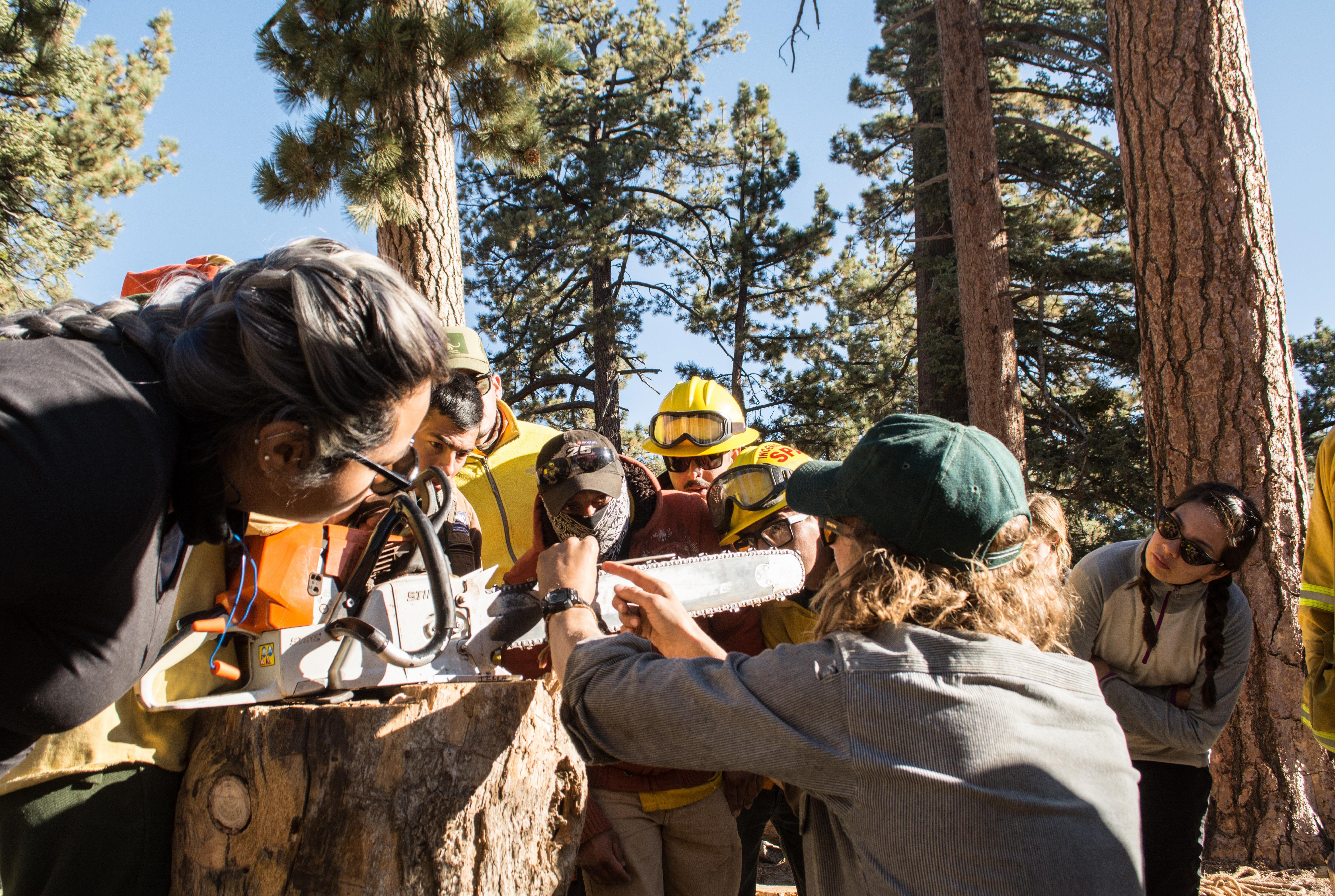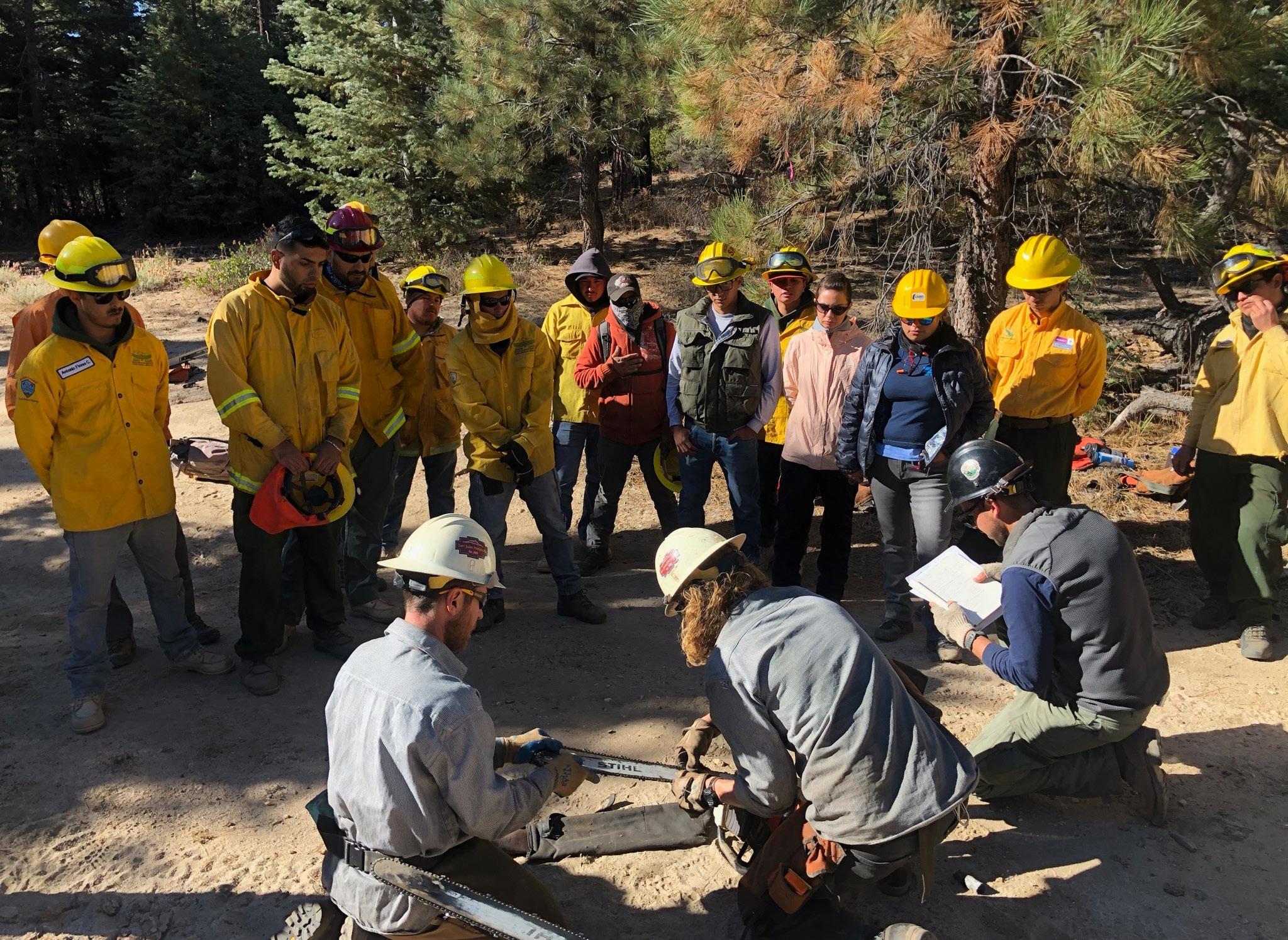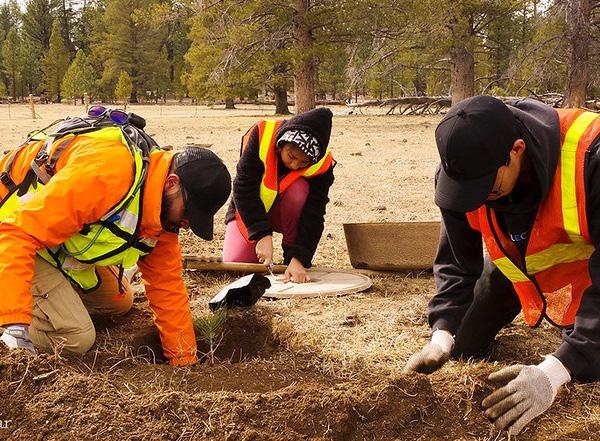
5 minute read
Climate Change Adaptation: Resilience Project in the Sierra San Pedro Martir
By Aurora Torres and Mariana Espinosa
About the Resilience Project
Advertisement
The project “Strengthening the effectiveness of management and the resilience of natural protected areas to protect biodiversity threatened by cli- San Pedro Martir National Park and its area mate change”, also known as the Resilience Project was implemented in 17 Natural soils, maintain a healthy fire regime and Protected Areas of Mexico, including the ecosystem restoration, and contribute to the Sierra de San Pedro Martir National Park.
The goal is to reduce the adverse impacts of climate change on biodiversity and human communities by strengthening the effective management of Natural Protected Areas. This project is implemented by the National Commission of Natural Protected Areas and the United Nations Development Program (UNDP) and funded by the Global Environment Facility (GEF).

Volunteer instructor Eric Stoorza shows the correct way to sharpen saws.
Photo by Felipe León.
During 2019 and 2020, Terra Peninsular implemented different adaptation measures to climate change within the Sierra de San Pedro Martir National Park and its area of influence to conserve and protect forest soils, maintain a healthy fire regime and ecosystem restoration, and contribute to the long-term carbon dioxide capture in forest biomass.
These actions were combined with training to forest brigade members and park rangers on fire management, conservation and soil protection, reforestation, forest nursery management, and germplasm collection.

Mechanical treatment of fuel material.
Photo by Mariana Espinosa.
In a parallel manner, with the purpose of creating a baseline with a gender approach, we developed a structured observation guide for women’s participation during the project that included management, participation, workshops and conferences attendance, and exchanges of experiences. This information provides the guidelines for future environment and community projects. Furthermore, it will help to search and implement strategies that contribute to gender equality and closing the gender gap.

Training on forest soil restoration in the national park.
Photo by Bryan Gerardo.
Importance of Sierra de San Pedro Martir
The Sierra de San Pedro Martir is located in the central part of Baja California; it’s one of the state’s primary forest reserves. It is considered a pristine area with a high conservation status thanks to its geographic isolation, the area and its physical and biological characteristics.
The altitude ranges from 600 to 3,098 meters above sea level (between 1,900 and 10,000 feet). Its characteristic relief allows us to appreciate its various ecosystems, such as the coastal scrub, chaparral, grasslands, wetlands, and mixed forests in the highest parts.

We can also highlight the diversity of ecosystem services provided by the sierra: wáter collection and supply, climate regulation, biodiversity, value landscape, and very dark and clear night skies, which favor astronomical research.
Due to its high biodiversity and forest wealth, in 1947, part of the highest and most forested areas of the sierra were declared a National Park for their conservation, a category of Natural Protected Area in Mexico.
Additionally, the mountain system is located in the Priority Terrestrial Region and the Priority Hydrological Region of CONABIO (National Commission for the Knowledge and Use of Biodiversity); it’s also recognized as an Area of Importance for the Conservation of Birds in Mexico.

Ranchers chatting about management grassland regeneration and its possible application within their ranches.
Photo by Aurora Torres.
Project outcomes
The results of the conservation, restoration, and fuel management activities in the Sierra de San Pedro Martir National Park and its area of influence were the following:
Forest soil conservation and protection actions
• 80 hectares (197 acres) of forest soils were protected through the arrangement of dead plant material in the form of cords and the construction of dams with dead trees, branches and rocks in order to reduce water erosion.
• Installation of a fence to exclude cattle in the national park with 60 hectares (148 acres).
• 1 training in forest soil conservation and protection.

Training in germplasm management for brigade members and park rangers.
Photo by Aurora Torres.
Actions for the contribution of carbon dioxide capture in forest biomass in the long term
• Rehabilitation of the forest nursery of the national park.
• Identification of 105 hectares (259 acres) for the implementation of seed stands. 8 kilos (17 pounds) of collected germplasm of black pine (Pinus jeffreyi).
• Reforestation of 10 hectares (24.7 acres) of black pine in the national park.
• 2 trainings in nursery management, germplasm collection and reforestation.

Training on fuel management with chainsaws.
Photo by Samuel Strain.
Regenerative management of grasslands
• 2 exchanges of experiences with people from Ejido El Bramadero on regenerative management of grasslands.

Volunteers from UABC during the reforestation.
Photo by Laura Tamayo.
Reduction of the danger of occurrence and spread of forest fires
• 60 hectares (148 acres) of mechanical fuel treatment to reduce wildfires.
• 25 kilometers (15.5 miles) of firebreaks were rehabilitated within the park and the area of Los Montes de San Pedro.
• 1 workshop on the use of chainsaw and fuel removal in forest fires.
• 1 training in forest fuel management.

Participatory workshop with key stakeholders to make decisions through participatory mapping.
Photo by Aurora Torres.
Acknowledgements
We appreciate the participation and support of:
• Sierra San Pedro Martir National Astronomical Observatory from UNAM.
• Staff members of the Condor Project. • Ranchers from the area of influence. • Owners of Los Montes de San Pedro.
• Volunteer students from the Faculty of Sciences of UABC.
• Sierra San Pedro Martir National Park.
• United States Forest Service (USFS) hotshots.
Throughout this project we had the opportunity to meet and work closely with researchers, project managers, local communities, park rangers and the forest brigade of the national park, whom we admire, respect and value for the great conservation and preservation work they carry out every day. It was a very enriching experience, both professionally and personally.
♦ MARIANA ESPINOSA has a degree in Environmental Sciences and works as the Sierra de San Pedro Martir Projects Officer at Terra Peninsular mariana@terrapeninsular.org
♦ AURORA TORRES is an Environmental Engineer and works as the Land Protection Assistant at Terra Peninsular aurora@terrapeninsular.org
Related articles
• Darkness, a Refuge for Wildlife (issue 17, page 13).
• Resilience Project: Sierra de San Pedro Mártir (issue 18, page 18).
• Gender: Cross-Cutting Theme in Environmental and Climate Change Projects (issue 19, page 17).









